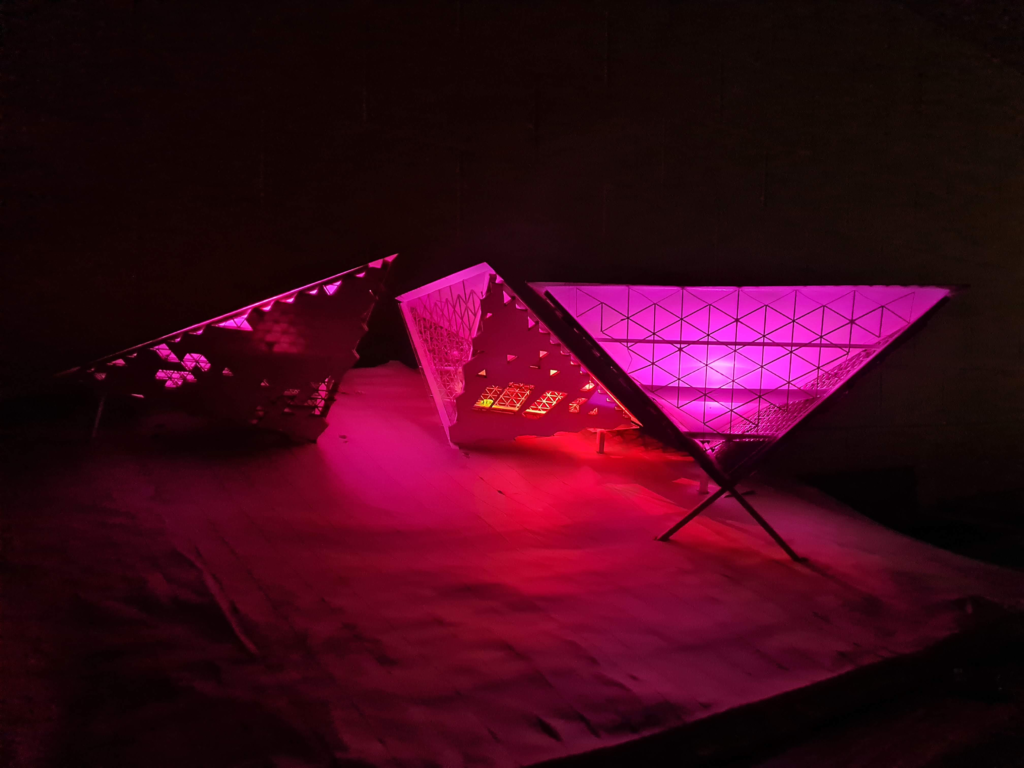

Fractal Luminescence
Studio: Personal Project
Supervisors: Victoria McReynolds
Academic: BSc 04 TTU
Project Scheme: Solar Observatory
Location: Lubbock, Texas

Dealing with light is a fundamental principle of design in architecture. Observing the different stages of the sun and its relationship with the building gives the observer a better understanding of how its behavior affects our built environment. By designing a solar observatory to observe the sun in the plains of Texas and the steep mountains of Norway, we start to see the change in the sun’s effect due to the latitudinal positioning of the location.

Sarpsborg Norway is an area with drastic mountainous elevation. Since the main function of the building on this site was to be a solar observatory, it was important to see the sun path. The site pitch faces north. There were some water views towards the west with a highway along its coast.
Thinking with the hands was a strong part of the design process for this project. The wood gave sturdiness and distinctiveness while clay gave flexibility. By studying how these different qualities performed under different lighting conditions gave insight to their relationship with one another.
With a drastic slope to the site in Norway, modeling the extreme nature of the place was a starting point to better grasp the conditions of the area. From the site, the idea of fractals came as the nature of fractals were continuously regenerative. Therefore, this form could extend across the site.
This solar observatory facility contain three fractal forms joined together with sky bridges. The west module contains a cafe on the lower floor and office space on the top floor. Meanwhile, the central module has a reception space on the lower floor and the solar observatory space on the upper floor. The east wing contains workshop and classroom spaces.

The triangular motif throughout the project is inspired by the steep pitch of the surrounding mountains. This motif is further expressed in the space frame that encases the triangular form. Additionally, the solar observatory is designed to have minimal impact on the site. Therefore, piles were chosen to elevate the building like stilts, avoiding the need to cut into the mountain to create level ground. This solar observatory aims to harmonize with its surroundings, serving as a beacon for discovery.